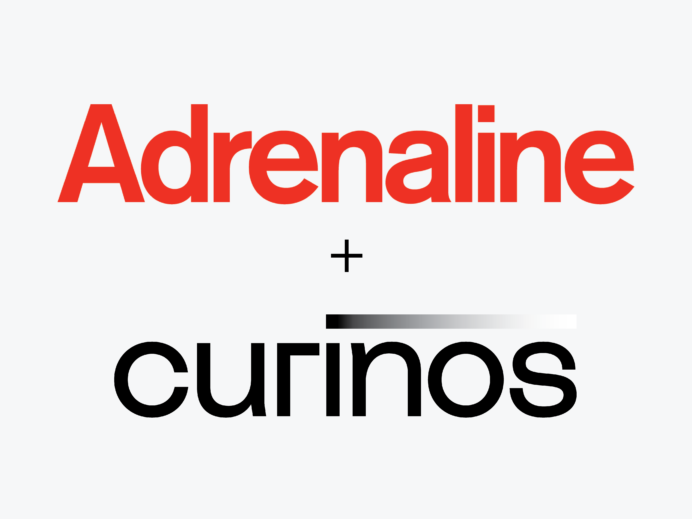In “What It Will Take to Have Interactive Tellers Catch On with Consumers,” Juliet D’Ambrosio discusses strong consumer interest and institutional support for these hybrid banking solutions.
Wednesday, November 17, 2021 – A recent article in the Financial Brand puts a spotlight on the ITM – its planned-for expansion post-COVID by banks and credit unions and strong interest among all age groups in using them. New data from Adrenaline finds that financial institutions deploying ITMs are drawn to its cost-effective response to banking’s always-on demands. “For financial institutions, the benefits are clear,” according to Juliet D’Ambrosio, Adrenaline’s managing director of strategy. “This self-service technology serves as a bridge between the physical and digital, improving customer experience and increasing revenue per customer. It can serve dual purposes – automating routine banking activity while providing access to bankers for higher-value consultations.”
Meanwhile, consumers and FIs generally agree on ITMs usefulness even if their bank hasn’t deployed one yet. How comfortable consumers are with ITMs relies on their familiarity with them, and with so few deployed, many consumers don’t yet have that direct experience. “What we found was financial institutions, in some ways, overestimate how comfortable their customers or members are using ITMs,” according to D’Ambrosio. “There’s not a huge difference but there is a difference that is significant enough to take notice of.” This finding spotlights the need for customer-facing communication and staff support. D’Ambrosio says, “There is a need for more investment in upfront education to get consumers to use ITMs more comfortably and therefore to have a more positive perception.”
ITMs from the user’s point of view
The Financial Brand outlines the consumer data as follows.
- Only 6% of consumers report using an ITM in the past year, based on a national sample. More consumers have not used ITMs is because the units have not been widely deployed yet.
- All generations surveyed said they’d be comfortable with using an ITM. In order, it’s: 86% of Millennials, 85% of Gen X, 80% of Gen Z, and 72% of Baby Boomers.
- By function, consumers would be comfortable using ITMs for making a deposit or withdrawal (68%), making a credit payment (40%), applying for credit (26%) and paying bills (21%).
- 84% of those who have used ITMs report some level of satisfaction, from “somewhat” (32%) to “extremely” (52%). 16% were “dissatisfied.”
ITMs from the financial institution’s point of view
The Financial Brand outlines the institutional data as follows.
Select data from the extensive survey data of banks and credit unions that have deployed ITMs shows:
- Non-ITM branch employees spend 60% of their time on routine transactions.
- 77% of financial institutions with ITMs report sale close rates better than or equal to other channels.
- While 25% of financial institutions currently deploy ITMs, 60% plan to include them in the next three years.
- Branches enabled with self-service technology, including ITMs, report 60-70% improvement in branch effectiveness as measured by cost savings and increased sales.
- Improving customer experience and increasing revenue per customer are the top objectives that drive financial institutions to deploy ITMs.
Future Forward
On the evolving role of banking staff, relationships will continue to be critical. “We think it’s not going to be an `either/or’ situation but it’s going to continue to be a `both/and’ situation,” according to D’Ambrosio. “Human beings need other human beings, especially with something as emotionally fraught as your money, your bank, your future, according to D’Ambrosio. The role of the teller will adapt to become the role of financial guide and advisor, while the transactions that are able to be automated easily will be done by self-service, such as ITMs.”
Branch banking isn’t going away, either, but rather, evolving along with staff roles. “Sixty-six percent of consumers want to bank with a branch that is within 15 minutes of where they live and work,” according to D’Ambrosio, and self-directed options like ITM are a critical component of that branch network. “ITMs have an increasingly important role because they are going to enable a bank or credit union to continue to have a community presence, to continue to make a psychological connection with a potential or current customer or member and do it in a highly convenient, 24/7 manner.”
The Financial Brand is a digital publishing platform focused on brand, marketing and strategy in financial services. Serving high-level leaders, the trade publication features ideas, insights and information for banks and credit unions building their brands and covers a range of critical issues facing banks and credit unions today, including technology, customer service and branch transformation.
To request a copy of the full ITM Insights or to speak with one of our thought leaders on the data findings, contact Lynn Harris Medcalf at [email protected]. Also be sure to stay tuned for additional ITM research and industry insights to be featured on Adrenaline’s Insights channel and Believe in Banking, along with an upcoming white paper for financial institutions as they make decisions about deploying self-service technologies.
Adrenaline is an experience design agency that creates and implements end-to-end branded experiences through creative and environmental design. We enhance our clients’ customer experiences across digital and physical channels, from their branding and advertising to design and technology in their spaces. After transforming an organization’s brand, Adrenaline extends it across all touchpoints — from employees to the market to in-store environments. And, we focus on serving industries that sell human experiences including financial, healthcare, sports and entertainment.







